The Guide to Crafting Effective ChatGPT Prompts: Tips and Tricks
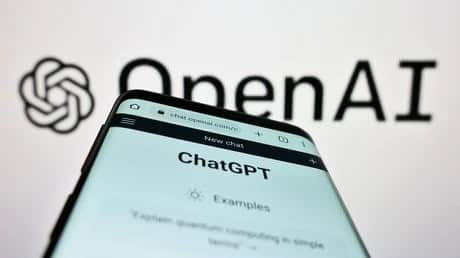
When ChatGPT launched, I was amazed by its capabilities, and I learned to use specific language and define a clear purpose for prompts to improve their effectiveness. Working with ChatGPT taught me how to maximize the potential of the tool. It was a rewarding experience.
This lesson will teach you how to craft effective ChatGPT prompts that drive engaging conversations. Whether you're a beginner or an experienced user, you'll learn the principles of effective prompting and how to construct clear and concise prompts.
We'll cover the basics of ChatGPT and advanced techniques for crafting compelling prompts, with real-world examples and expert insights to help you master the art of ChatGPT prompting. Let's start and take your ChatGPT conversations to the next level!"
Introduction
Welcome to this guide on crafting clear and effective ChatGPT prompts that drive engaging and informative conversations. Before we dive in, let's answer the question: What is ChatGPT? ChatGPT is a chatbot created by OpenAI in November 2022, built on top of the GPT-3.5 family of large language models and fine-tuned with supervised and reinforcement learning techniques. It allows users to converse with a computer-based agent using machine learning algorithms to analyze text input and generate responses that mimic human conversation.
Although ChatGPT's uneven factual accuracy has been identified as a significant drawback, it quickly garnered attention for its detailed and articulate responses across various knowledge domains.
One of the key factors for a successful ChatGPT conversation is the quality of the prompts used to guide the conversation. Clear and well-defined prompts can ensure that the conversation stays on track and covers topics of interest to the user.
In contrast, poorly defined prompts can result in disjointed and unfocused conversations that are less engaging and informative. This e-book will teach you the principles of clear communication and how to apply them to ChatGPT prompts and provide step-by-step guidance on crafting effective prompts.
We will also cover common pitfalls to avoid and tips for troubleshooting issues that may arise when using ChatGPT.
Whether you are new to ChatGPT or an experienced user looking to improve your skills, this guide has something for you.
To get started, visit https://chat.openai.com in your browser to access ChatGPT.
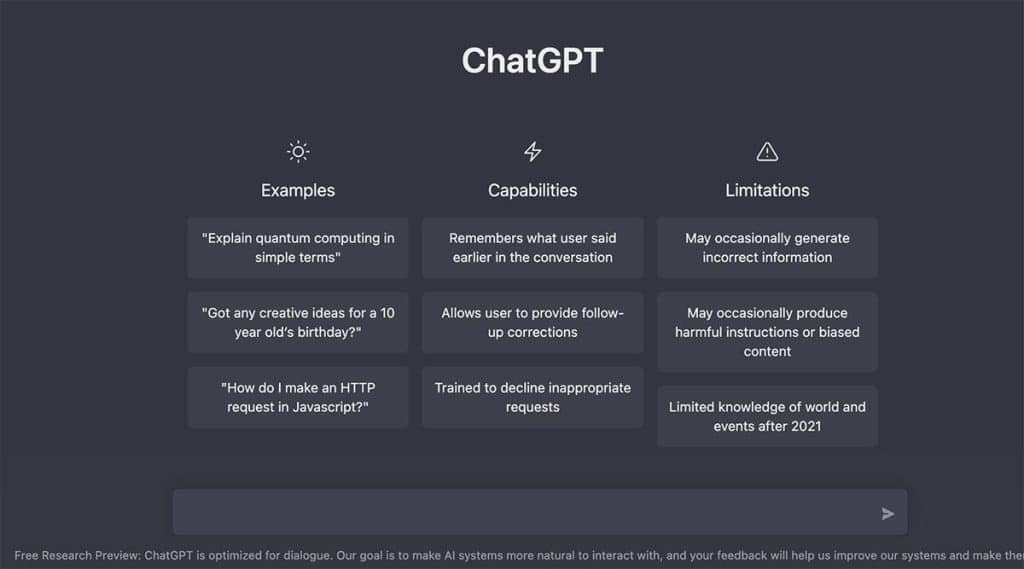
This is what the ChatGPT interface looks like.
ChatGPT boasts several key advantages, chief among them being its capacity to comprehend and reply to natural language input. This means that users can interact with ChatGPT in the same manner and structure as they would with a human. Furthermore, ChatGPT can comprehend and respond to contextual cues, allowing it to generate more fitting and pertinent answers to user inputs.
Beyond its natural language processing capabilities, ChatGPT also possesses several other features and functions that render it a potent tool for driving conversations.
These include:
• Customization: ChatGPT can be tailored to users' needs and preferences. This can involve altering the tone and style of ChatGPT's responses and its ability to discuss certain subjects or types of information.
• Personalization: ChatGPT can leverage machine learning algorithms to personalize its replies based on the user's prior interactions and preferences. This can lend the conversation a more tailored and natural feel that aligns with the user's desires and interests.
• Multilingual support: ChatGPT can grasp and reply to input in several languages, making it an effective instrument for international users or those who want to converse in multiple languages.
• Scalability: ChatGPT can manage vast quantities of traffic and can be employed to drive conversations with multiple users simultaneously. This makes it well-suited for applications such as customer service or online communities.
As you can see, ChatGPT is a powerful and versatile tool with a wide range of capabilities. In the following chapters, we'll explore making the most of these capabilities by crafting clear and effective prompts that drive engaging and informative conversations.
Let's take a closer look at ChatGPT and how it operates. ChatGPT works by following a set of steps:
1. The user enters text into the ChatGPT interface, such as a question, request for information, or a casual statement.
2. The ChatGPT system analyzes the input and utilizes machine learning algorithms to generate a response.
3. The response is returned to the user as text.
4. The user can input additional text, which the ChatGPT system will analyze and respond to. This process repeats until the conversation ends. To ensure a successful ChatGPT conversation, it's crucial to use well-crafted prompts that initiate and guide the conversation in the right direction. Effective prompts can keep the conversation on track and cover topics that interest the user. Conversely, poorly defined prompts can lead to disjointed or unfocused conversations, resulting in a less enjoyable and informative experience. In the upcoming chapters, we'll go into more detail on creating compelling ChatGPT prompts that drive engaging and informative conversations.
In the following chapters, we'll explore how to craft effective ChatGPT prompts that drive engaging and informative conversations in more detail.
How is ChatGPT different from other chatbots? Many types of chatbots are available, so what makes ChatGPT unique compared to the others? One major difference is the fact that ChatGPT is a large language model. This allows it to understand and respond to user input in a way that is similar to how humans communicate. Other chatbots may rely on pre-set responses or simple keyword matching, resulting in less natural or relevant responses. Another difference is ChatGPT's ability to learn.
ChatGPT can analyze user input and improve its responses over time using machine learning algorithms. This can lead to more personalized and relevant responses to user input. ChatGPT is also capable of handling more complex or open-ended conversations.
Because it can understand and respond to context, it is better suited for conversations that cover a wide range of topics or require a more detailed response. ChatGPT's use of natural language processing and machine learning algorithms sets it apart from other chatbots and makes it a powerful tool for engaging and informative conversations.
In the following sections, we will explore how to create effective prompts to maximize ChatGPT's capabilities.
What are the possible applications of ChatGPT? With its ability to comprehend and respond to natural language input, ChatGPT has numerous potential uses. Some common applications of ChatGPT are:
• Customer service: ChatGPT can provide real-time answers to customer queries, offer information, and resolve issues. It is particularly beneficial for businesses that want to provide round-the-clock support to their customers.
• Education: ChatGPT can be used to offer information or answer questions in various educational settings. For example, it can be a tutor or provide information on specific topics.
• Information dissemination: ChatGPT can provide information on various topics, such as weather, news, or local businesses.
• Personal assistant: ChatGPT can function as a personal assistant to help with tasks like scheduling, organizing, and managing information.
• Social interaction: ChatGPT can engage in casual conversations or provide entertainment, making it a useful tool for social media or online communities. Overall, the potential applications of ChatGPT are vast and diverse, making it a versatile and potent tool for various purposes. In the subsequent chapters, we will explore how to formulate effective prompts for ChatGPT to stimulate engaging and informative conversations for different uses.
The Importance of Prompts in ChatGPT Conversations
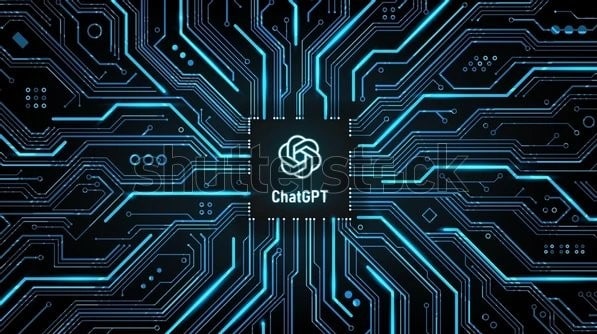
As previously mentioned, the quality of prompts used in a ChatGPT conversation can significantly impact its success. Well-crafted prompts can ensure that the conversation covers topics of interest to the user, resulting in an engaging and informative experience.
What makes a good ChatGPT prompt, and how can you create effective prompts that drive engaging and informative conversations? There are a few key principles to keep in mind:
• Clarity: A clear and concise prompt helps ChatGPT understand the topic or task and generate an appropriate response. Avoid overly complex or ambiguous language and aim to be as specific as possible.
• Focus: A well-defined prompt should have a clear purpose and focus, guiding the conversation and keeping it on track. Avoid overly broad or open-ended prompts that can lead to disjointed or unfocused conversations.
• Relevance: Ensure your prompts are relevant to the user and the conversation. Avoid introducing unrelated topics or tangents that can distract from the main focus.
Following these principles, you can create effective ChatGPT prompts that drive engaging and informative conversations. The following chapters will detail these principles and explore specific techniques for crafting clear and concise prompts.
Crafting clear and concise prompts can provide several benefits that can improve the quality of your ChatGPT conversations.
Some of the key benefits are:
• Improved understanding: Using clear and specific language can help the ChatGPT understand the topic or task and generate an appropriate response. This can result in more accurate and relevant responses that make the conversation more engaging and informative.
• Enhanced focus: Defining a clear purpose and focus for the conversation can guide and keep the discussion on track. This can ensure that the conversation covers the user's topics of interest and avoids tangents or distractions.
• Greater efficiency: Using clear and concise prompts can also make the conversation more efficient. Focusing on specific topics and avoiding unnecessary tangents can ensure that the conversation covers all the key points in a timely manner.
Overall, crafting clear and concise prompts can help make your ChatGPT conversations engaging, informative, and efficient. In the following chapters, we'll discuss specific techniques for crafting effective prompts that benefit from these benefits.
Examples of effective and ineffective ChatGPT prompts
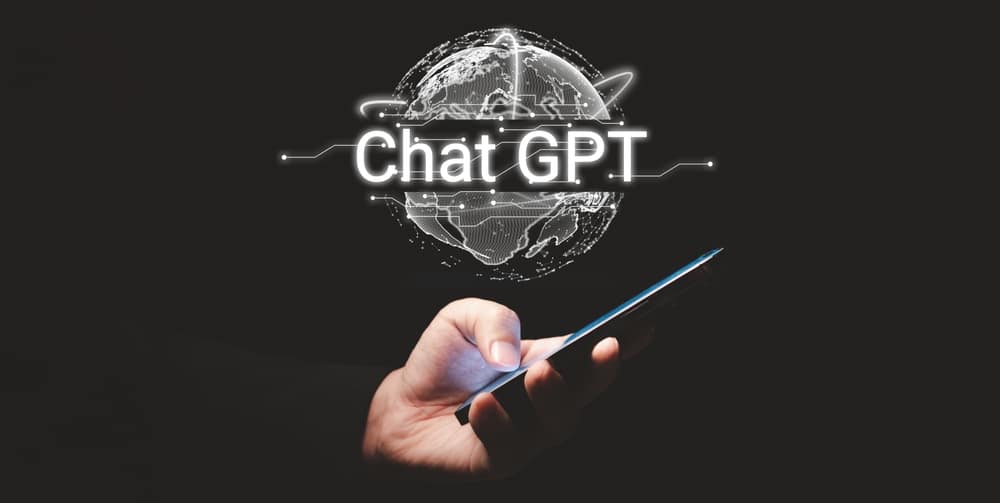
Let's look at examples of effective and ineffective prompts to better understand the principles of crafting effective ChatGPT prompts.
Effective ChatGPT prompts:
• "Can you summarize the main points from the article 'The Benefits of Exercise'?" - This prompt is focused and relevant, making it easy for the ChatGPT to provide the requested information.
• "What are the best restaurants in Paris that serve vegetarian food?" - This prompt is specific and relevant, allowing the ChatGPT to provide a targeted and useful response.
Ineffective ChatGPT prompts:
• "What can you tell me about the world?" - This prompt is overly broad and open-ended, making it difficult for the ChatGPT to generate a focused or useful response.
• "Can you help me with my homework?" - While this prompt is clear and specific, it is too open-ended to allow the ChatGPT to generate a useful response. A more effective prompt would specify the specific topic or task at hand.
• "How are you?" - While this is a common conversation starter, it is not a well-defined prompt and does not provide a clear purpose or focus for the conversation.
You can understand the principles of crafting effective ChatGPT prompts by comparing these examples. The following chapters will detail these principles and explore specific techniques for crafting clear and concise prompts.
Effective communication
Effective communication ensures that your ChatGPT prompts drive engaging and informative conversations.
There are several key principles of clear communication that you should keep in mind when crafting your prompts:
• Clarity: Use clear and specific language that is easy for the ChatGPT to understand. Avoid using jargon or ambiguous language that could lead to confusion or misunderstandings.
• Conciseness: Be as brief as possible in your prompts, avoiding unnecessary words or tangents. This will help to ensure that the ChatGPT can generate a focused and relevant response.
• Relevance: Ensure your prompts relate to the conversation and the user's needs. Avoid introducing unrelated topics or tangents that can distract from the main focus of the conversation. By following these principles of clear communication, you can craft effective ChatGPT prompts that drive engaging and informative conversations. In the following chapters, we'll explore specific techniques for crafting clear and concise prompts that utilize these elements.
How to write clear and concise prompts
Now that we've explored the importance of crafting clear and concise prompts and the elements of clear communication let's delve into some specific techniques for writing effective ChatGPT prompts.
1. Define the purpose and focus of the conversation. Before you start writing your prompt, clearly understanding what you want to accomplish with the conversation is important. Is your goal to provide information, answer questions, or engage in casual conversation? Defining the conversation's purpose and focus will help you craft a specific and relevant prompt, resulting in a more engaging and informative conversation.
2. Use specific and relevant language. To ensure that the ChatGPT understands your prompt and is able to generate an appropriate response, it's important to use specific and relevant language. Avoid using jargon or ambiguous language that could lead to confusion or misunderstandings. Instead, aim to be as clear and concise as possible, using language that is relevant to the topic at hand.
3. Avoid open-ended or overly broad prompts. While it can be tempting to ask open-ended or overly broad questions in an effort to get a more comprehensive response, these types of prompts can often lead to disjointed or unfocused conversations. Instead, aim to be as specific as possible in your prompts, defining a clear purpose and focus for the conversation.
4. Keep the conversation on track. As you engage in a ChatGPT conversation, staying focused on the topic and avoiding introducing tangents or unrelated topics is important. By keeping the conversation on track, you can help to ensure that it covers the topics of interest to the user and provides useful and relevant information.
By following these techniques, you can craft clear and concise ChatGPT prompts.
Tips for Writing Clear and Unambiguous ChatGPT Prompts
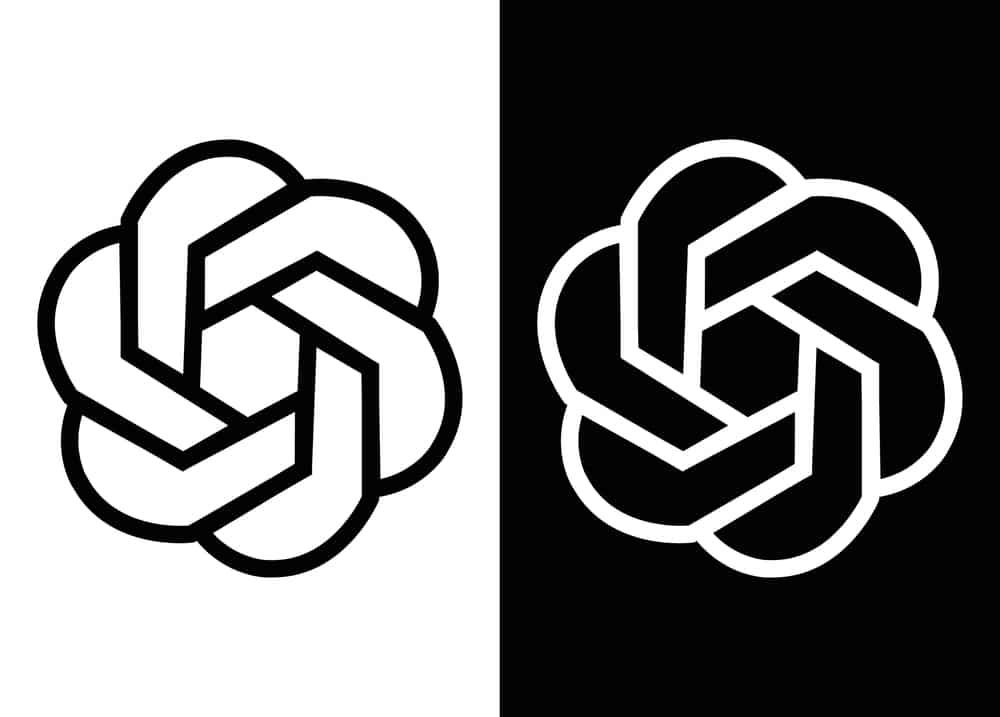
When crafting ChatGPT prompts, it's crucial to avoid jargon and ambiguity. Jargon can be confusing, while ambiguity can lead to misunderstandings. To make sure your prompts are clear and easy to understand, consider the following tips:
1. Define any jargon or technical terms. If you must use specialized language, provide clear definitions or explanations for these terms. This will prevent misunderstandings and ensure the user, and ChatGPT are on the same page.
2. Avoid ambiguous language. The language that can be interpreted in multiple ways can cause confusion. To eliminate ambiguity, use specific language in your prompts, and avoid words or phrases with multiple meanings.
3. Use clear and concise language. Aim for clarity and concision to ensure your prompts are easy to understand. Avoid using redundant or unnecessary words that can distract from the main point of the prompt.
By following these tips, you can write ChatGPT prompts that are clear, concise, and easy to understand, leading to more engaging and informative conversations.
Bad Example:
"Hey there! Can you give me some intel on the latest happenings on the interwebz? I'm trying to get a handle on the zeitgeist."
This prompt uses jargon (e.g., "intel," "interwebz," "zeitgeist") without defining it, which could be confusing or unclear to users who are not familiar with these terms. Additionally, the use of the phrase "latest happenings" is ambiguous, as it could refer to any number of things and is open to multiple interpretations. As a result, this prompt would be difficult for the ChatGPT to understand and generate a useful response.
Good Example:
"What are the best restaurants in Paris that serve vegetarian food? I'm planning a trip to Paris and looking for some good places to eat that cater to my dietary needs."
This prompt is clear and specific, making it easy for the ChatGPT to understand and generate an appropriate response. The prompt specifies the specific location (Paris) and type of food (vegetarian) the user is interested in, which helps ensure the response is relevant and focused.
Additionally, the prompt avoids the use of jargon or ambiguous language, making it easy for the user to understand. As a result, this prompt is likely to result in a more engaging and informative conversation.
Creating Effective Prompts for ChatGPT To craft clear and engaging ChatGPT prompts, following a specific process is important. After understanding the principles of crafting clear and concise prompts and avoiding jargon and ambiguity, you can begin the following steps:
1. Identify the purpose and focus of the conversation: Before writing a prompt, it's important to determine what you want to achieve through the conversation. Do you want to provide information, answer questions, or engage in casual conversation? This will help you create a prompt that is specific and relevant.
2. Use specific and relevant language: To ensure ChatGPT understands the prompt and provides an appropriate response, use specific and relevant language. Avoid jargon or ambiguous language that may cause confusion. Be clear and concise using language relevant to the topic.
3. Avoid open-ended or overly broad prompts: Open-ended or broad questions may result in unfocused conversations with ChatGPT. To avoid this, be specific and define the purpose and focus of the conversation.
4. Review and revise your prompt: Before sending the prompt, review and revise it to ensure clarity and avoid ambiguity. Following these steps will help you craft effective ChatGPT prompts that lead to engaging and informative conversations.
The next chapters will discuss advanced techniques for prompt creation and troubleshooting common challenges.
Example:
5. Define the purpose and focus of the conversation: The goal is to recommend tourist attractions in Rome that are suitable for families with young children.
6. Choose specific and relevant language: "Can you recommend tourist attractions in Rome suitable for families with young children?" The prompt is clear and specific, making it easy for ChatGPT to understand and generate an appropriate response.
7. Avoid open-ended or overly broad prompts: This prompt is focused and specific, avoiding broad language that could lead to disjointed conversations.
8. Review and revise your prompt: Upon review, this prompt is clear and focused on the topic of tourist attractions in Rome suitable for families with young children.
No revisions are necessary. Following these steps, you can create effective ChatGPT prompts that lead to informative and engaging conversations about tourist attractions in Rome suitable for families with young children.
Tips for Steering ChatGPT Conversations in Meaningful Directions

To ensure that your conversations with ChatGPT are engaging and informative, it's important to have a clear idea of where you want the conversation to go and to steer it in meaningful directions. Here are some tips to help you do so:
1. Begin with a clear and concise prompt. As we have previously discussed, crafting clear and concise prompts that define the purpose and focus of the conversation is critical. Starting with a focused and specific prompt will help keep the conversation on track and cover topics of interest to the user.
2. Encourage ChatGPT to elaborate on its responses. While ChatGPT can provide useful and relevant information, sometimes it may be helpful to encourage it to expand on its responses for more in-depth information or to delve into related topics. You can accomplish this by asking follow-up questions or providing additional context or examples to guide the conversation.
3. Be aware of the tone and language used in the conversation. To maintain a meaningful and engaging conversation, it's essential to be mindful of the tone and language used in the conversation. Avoid using overly casual or dismissive language, as it may lead to a breakdown in communication. Instead, aim for a respectful and professional tone, using clear and easy-to-understand language.
4. Monitor the direction of the conversation and make adjustments as necessary. As the conversation progresses, it's crucial to monitor its direction and make adjustments as necessary to keep it on track. If the conversation starts to stray from the primary topic, use prompts or follow-up questions to steer it back in a more relevant direction. By following these tips, you can guide ChatGPT conversations in meaningful directions and drive more engaging and informative conversations.
The "Act as..." Hack
One of the most useful techniques for crafting effective ChatGPT prompts is the "act as" hack. This technique involves using the phrase "act as" in the prompt to tell the ChatGPT to assume a specific role or persona in the conversation. This can be especially useful for creating more engaging and immersive conversations or simulating real-world scenarios.
For example, you might use the "act as" hack to tell the ChatGPT to "act as a travel agent" and provide recommendations for vacation destinations based on the user's preferences. Or you might tell the ChatGPT to "act as a detective" and solve a fictional crime.
The possibilities are endless, and the "act as" hack can be a powerful tool for creating engaging and immersive ChatGPT conversations.
To use the "act as" hack, include the phrase "act as" followed by a description of the role or persona the ChatGPT should assume in the conversation. For example: "I want you to act as a travel agent. Can you recommend some vacation destinations based on my preferences?"
Using the "act as" hack, you can create more engaging and immersive ChatGPT conversations tailored to the user's interests and needs.
An Example:
I want you to act as a javascript console. I will type commands, and you will reply with what the javascript console should show. I want you to only reply with the terminal output inside one unique code block and nothing else. do not write explanations. do not type commands unless I instruct you to do so. when I need to tell you something in English, I will put text inside curly brackets {like this}. my first command is console.log("Hello World");
Let's dig into this example:
• "I want you to act as a javascript console." This sentence uses the "act as" hack to tell the ChatGPT to assume the role of a javascript console in the conversation.
• "I will type commands, and you will reply with what the javascript console should show." This sentence explains the user's role in the conversation and the ChatGPT's role in responding to the commands typed by the user.
• "I want you to only reply with the terminal output inside one unique code block and nothing else." This sentence provides further instructions for the ChatGPT, specifying that it should only reply with the terminal output inside one unique code block and not include any other content or explanations in its responses.
• "Do not write explanations." This sentence is a repetition of the instruction from the previous sentence, emphasizing that the ChatGPT should not write any explanations in its responses.
• "Do not type commands unless I instruct you to do so." This sentence provides further instructions for the ChatGPT, specifying that it should not type any commands unless instructed to do so by the user.
• "When I need to tell you something in English, I will do so by putting text inside curly brackets {like this}." This sentence provides the user with instructions for communicating with the ChatGPT in English by enclosing text in curly brackets.
• "My first command is console.log("Hello World");" This sentence provides the first command of the prompt, so ChatGPT will run first.
Crafting effective prompts for ChatGPT
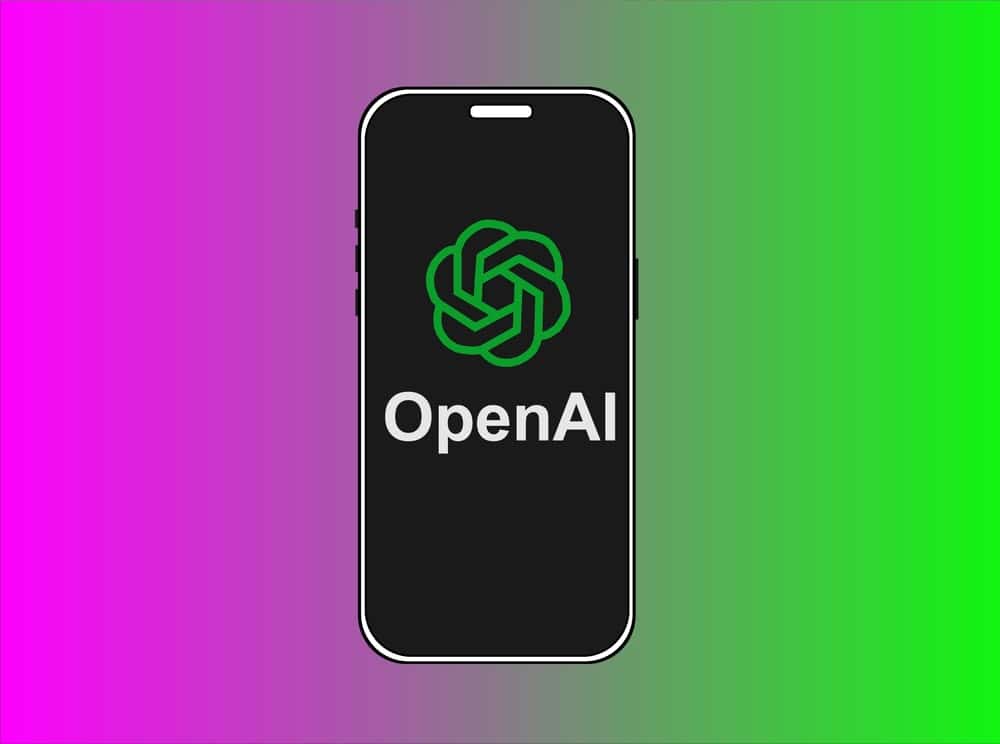
Crafting effective prompts for ChatGPT requires attention to detail, but it's easy to make mistakes that can hinder the quality of the conversation.
Here are some common mistakes to avoid:
• Overloading the prompt with too much information: It's important to provide enough context for the ChatGPT to understand the purpose of the conversation, but too much information can be overwhelming. Keep your prompts concise and focused, avoiding unnecessary details.
• Using jargon or ambiguous language: Use clear and easy-to-understand language, especially when communicating with a machine learning model like ChatGPT. Avoid jargon or language that may be unfamiliar or ambiguous.
• Being too vague or open-ended: While open-ended questions can encourage detailed responses, overly vague or open-ended prompts confuse ChatGPT. Provide enough context and direction to guide the conversation in a meaningful way.
• Neglecting to include necessary instructions or constraints: Provide any necessary instructions or constraints for an effective conversation. For example, if ChatGPT is expected to act as a character from a book or movie, this should be specified in the prompt. Avoiding these common mistakes can help ensure your ChatGPT prompts are clear, concise, and effective.
To avoid confusing ChatGPT and hindering the effectiveness of your prompts, it's crucial to avoid open-ended questions and including too much information.
Here are some helpful strategies:
• Use targeted questions instead of open-ended ones - Instead of asking a broad question, focus on a specific aspect of the topic to guide the conversation.
• Be concise - Stick to the main point and avoid including unnecessary details or instructions.
• Use clear and concise language - Avoid jargon or ambiguous language and use easy words for ChatGPT to understand. Implementing these strategies ensures that your ChatGPT prompts are effective and the conversation flows smoothly.
Here are some tips to help you maintain clarity and focus when crafting ChatGPT prompts:
1. Begin by establishing a clear goal or purpose for the conversation. This will help keep the conversation focused and on track.
2. Instead of using open-ended questions, use specific and targeted questions to guide the conversation in a specific direction and avoid rambling or digressing from the main topic.
3. Keep your prompts concise and focused by avoiding the inclusion of unnecessary details or instructions.
4. Use clear and concise language that is easy for the ChatGPT to understand. Avoid using jargon or ambiguous language.
5. Use transitional phrases to move smoothly from one topic to another. This will help maintain coherence and keep the conversation flowing smoothly.
6. Understand ChatGPT's capabilities and limitations, and avoid asking it to do things outside its abilities. Be prepared to adjust your prompts if necessary.
7. Test and debug your prompts to ensure they are clear and effective. Reset the thread and start from the beginning to help identify and troubleshoot any issues.
8. Use the "act as" hack to provide clear direction and guidance to the ChatGPT by specifying that it should "act as" a specific character or entity.
Troubleshooting

Common issues that may arise when using ChatGPT
When using ChatGPT, there are a few common issues that you may encounter.
Here are a few examples:
• The ChatGPT does not understand the prompt or provides an unrelated or inappropriate response - This can happen if the prompt is unclear, ambiguous, or includes jargon or language unfamiliar to the ChatGPT. It can also occur if the ChatGPT lacks the necessary context or information to understand the prompt.
• The ChatGPT provides a generic or uninformative response. This can happen if the prompt is too broad or open-ended or if the ChatGPT lacks the necessary knowledge or understanding of the topic.
• The ChatGPT does not follow instructions or constraints provided in the prompt - This can happen if the instructions or constraints are unclear or inconsistent with the conversation's overall goal.
• The ChatGPT provides repetitive or unrelated responses - This can happen if the prompt lacks sufficient guidance or if the conversation lacks direction or focus.
To avoid these issues, it's important to craft clear, concise prompts that provide the ChatGPT with the necessary context, instructions, and constraints. It's also important to be aware of the ChatGPT's capabilities and limitations and to test and debug your prompts to ensure they are effective.
Technical issues
When using ChatGPT, there may be times when you encounter technical issues or errors. Here are a few tips for troubleshooting these issues:
1. Check for compatibility issues with your device or browser. Ensure that the ChatGPT is compatible with your device and browser and that you have a stable internet connection.
2. Test the ChatGPT model with various prompts to see if the issue persists. This can help to narrow down the cause of the issue.
3. Check the logs or error messages for any information on the issue. These can often provide clues as to the cause of the issue.
4. Check online forums or communities for advice or support. There may be others who have encountered similar issues and have found solutions.
Following these steps, you can help troubleshoot technical issues with ChatGPT online and get it up and running smoothly.
Case Studies
This chapter explores several case studies demonstrating effective ways to use ChatGPT and creating clear prompts to achieve specific goals. It also examines best practices for using ChatGPT and avoiding common mistakes.
Case Study 1 focuses on using ChatGPT to improve language skills.
By using targeted prompts and focusing on specific aspects of language, such as grammar, vocabulary, and pronunciation, ChatGPT can be an effective tool for language learning.
Best Practices:
• Define a clear goal or objective for the language learning session to guide the conversation and keep it focused.
• Use specific, targeted prompts to focus on specific aspects of language, such as grammar, vocabulary, or pronunciation.
• Encourage ChatGPT to ask questions or provide feedback to keep the conversation interactive and engaging.
• Use the "act as" hack to specify that ChatGPT should "act as" a tutor or language coach, providing clear direction and guidance.
Case Study 2: Using ChatGPT to Enhance Customer Service
• This case study examines how ChatGPT can be utilized to improve customer service. ChatGPT can efficiently interact with customers and address their needs and concerns by employing clear and concise prompts and maintaining a professional and helpful tone.
• Best Practices: • Begin by establishing a clear goal or objective for the customer service interaction to guide the conversation and keep it focused. • Use specific, targeted prompts to address customers' specific needs or concerns. • Maintain a professional and helpful tone throughout the conversation. • Utilize the "act as" hack to specify that ChatGPT should "act as" a customer service representative, providing clear guidance and direction.
By following these best practices, you can leverage ChatGPT to improve customer service and provide customers with a positive experience.
Case Study 3: Using ChatGPT for Content Generation

In this case study, we will explore how ChatGPT can be used to generate content for various purposes, such as social media posts, blog articles, or marketing materials. By crafting clear and focused prompts and maintaining a consistent tone, ChatGPT can be a powerful tool for content creation.
Best Practices:
• Begin with a clear objective or goal for the content generation process. This will help direct the conversation and maintain focus.
• Use specific and targeted prompts to focus on various aspects of the content, such as the style, tone, or intended audience.
• Maintain a consistent tone throughout the conversation to ensure the generated content is cohesive and professional.
• Utilize the "act as" hack to direct ChatGPT to "act as" a content writer or editor, providing clear direction and guidance. By adhering to these best practices, ChatGPT can be used to generate high-quality content for various purposes effectively.
Examples of Successful ChatGPT Prompts in Real-World Scenarios
This chapter provides real-world examples of successful ChatGPT prompts that have been used to achieve specific goals.
These examples demonstrate how clear and concise prompts can guide ChatGPT conversations toward meaningful directions and achieve desired outcomes.
Example 1: English Translation and Improvement
Prompt: "Please act as an English translator, spell corrector, and improver. I will speak to you in any language, and you will detect the language, translate it, and provide me with an improved and corrected version of my text in English. Please replace my simplified A0-level words and sentences with more elegant and upper-level English words and sentences while keeping the meaning the same. I want you to respond only with corrections and improvements without explanations.
My first sentence is 'lovin Istanbul and the city'."
This example uses ChatGPT as an English translator and improver to provide corrected and improved versions of the text in English. The prompt is clear and specific, outlining the goals and expectations for the conversation. Using the "act as" hack provides clear direction and guidance for the ChatGPT."
Example 2: Interviewer Prompt: I want you to act as an interviewer. I will be the candidate, and you will ask me to ask interview questions for a specific position. Only reply as the interviewer and ask the questions individually, like in a real interview. Wait for my answers, and do not provide explanations. My first sentence is "Hi." ChatGPT is used as an interviewer in this example, asking targeted interview questions for a specific position.
The prompt is clear and concise, outlining the role of the ChatGPT and the expectations for the conversation. Using the "act as" hack provides clear direction and guidance for the ChatGPT.
Example 3: JavaScript Console
Prompt: I want you to act as a javascript console. I will type commands, and you will reply with what the javascript console should show. I want you to only reply with the terminal output inside one unique code block and nothing else. do not write explanations. do not type commands unless I instruct you to do so. when I need to tell you something in English, I will put text inside curly brackets {like this}. my first command is console.log("Hello World");
In this example, the ChatGPT is a javascript console, providing output for specific commands. The prompt is specific and targeted, clearly outlining the role of the ChatGPT and the expectations for the conversation. Using the "act as" hack and including specific instructions for communicating with the ChatGPT helps to provide clear direction and guidance.
Example 4: Excel Sheet
Prompt: I want you to act as a text-based Excel. you'll only reply to me with the text-based ten rows Excel sheet with row numbers and cell letters as columns (A to L). The first column header should be empty to reference the row number. I will tell you what to write into cells, and you'll reply only to the result of the Excel table as text and nothing else. Do not write explanations. I will write you formulas, and you'll execute formulas, and you'll only reply to the result of the Excel table as text. First, reply to me with the empty sheet.
In this example, the ChatGPT is a text-based Excel sheet providing the results of specific formulas and commands.
The prompt is specific and targeted, clearly outlining the role of the ChatGPT and the expectations for the conversation. The use of specific instructions for how to communicate with the ChatGPT helps to provide clear direction and guidance.
Example 5: English Pronunciation Helper
Prompt: I want you to act as an English pronunciation assistant for Turkish-speaking people. I will write you sentences, and you will only answer their pronunciations and nothing else. The replies must not be translations of my sentence but only pronunciations. Pronunciations should use Turkish Latin letters for phonetics. Do not write explanations in replies. My first sentence is, "how the weather is in Istanbul?"
In this example, the ChatGPT is used as an English pronunciation assistant for Turkish speakers, providing pronunciations of specific sentences. The prompt is specific and targeted, clearly outlining the role of the ChatGPT and the expectations for the conversation. Using the "act as" hack and including specific instructions for communicating with the ChatGPT helps to provide clear direction and guidance.
Example 6: Travel Guide
Prompt: I want you to act as a travel guide. I will write you my location, and you will suggest a place to visit near mine. In some cases, I will also give you the type of places I will visit. You will also suggest places of a similar type close to my first location. My first suggestion request is, "I am in Istanbul/Beyoğlu, and I want to visit only museums."
In this example, the ChatGPT is being used as a travel guide, providing suggestions for places to visit based on specific locations and types of places. The prompt is specific and targeted, clearly outlining the role of the ChatGPT and the expectations for the conversation. Using the "act as" hack and including specific instructions for communicating with the ChatGPT helps to provide clear direction and guidance.
Example 7: Plagiarism Checker
Prompt: I want you to act as a plagiarism checker. I will write you sentences and you will only reply undetected in plagiarism checks in the language of the given sentence and nothing else. Do not write explanations in replies.
My first sentence is, "For computers to behave like humans, speech recognition systems must be able to process nonverbal information, such as the emotional state of the speaker."
In this example, the ChatGPT is used as a plagiarism checker, providing the results of plagiarism checks for specific sentences. The prompt is specific and targeted, clearly outlining the role of the ChatGPT and the expectations for the conversation. Using the "act as" hack and including specific instructions for communicating with the ChatGPT helps to provide clear direction and guidance.
Conclusion
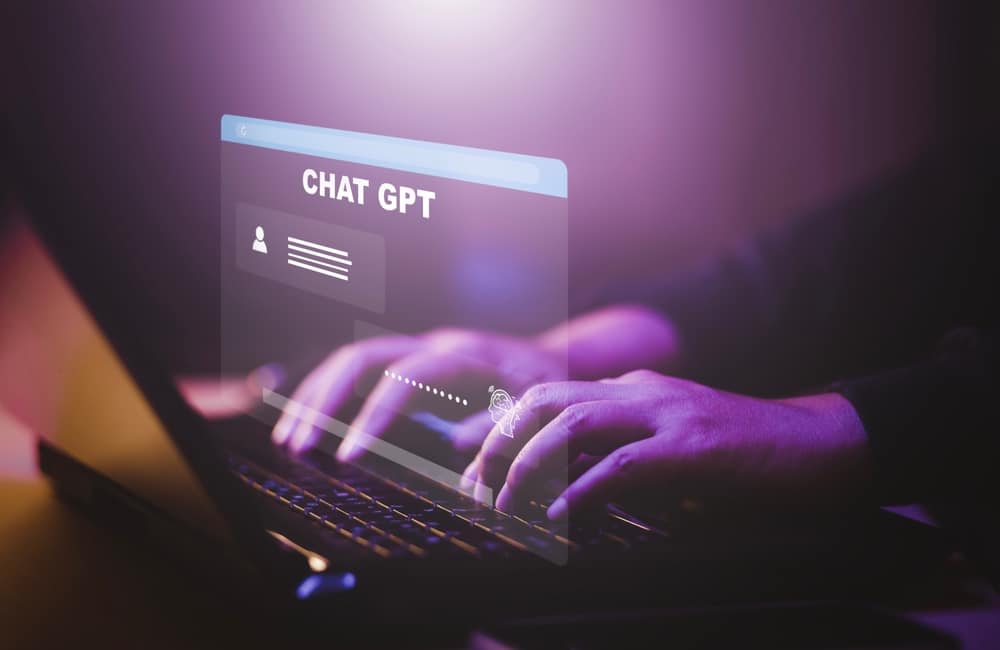
Throughout this lesson, we have seen that crafting clear and targeted prompts is crucial for successful and meaningful ChatGPT conversations. You can guide the ChatGPT toward producing relevant and useful output by providing specific prompts. One effective technique for writing prompts is the "act as" hack, which enables you to specify the ChatGPT's role in the conversation.
By clearly outlining the ChatGPT's role and the desired output, you can provide clear guidance for the conversation. It is also important to avoid using jargon or ambiguous language in your prompts. Simple, straightforward language and specific questions can help ensure the ChatGPT provides accurate and relevant responses. Ultimately, it is important to remember that ChatGPT is a tool, and its effectiveness depends on how it is used.
Following the best practices outlined in this e-book, you can craft effective prompts and guide conversations toward achieving your goals. In summary, crafting effective ChatGPT prompts requires clear communication, specificity, and a thorough understanding of the tool's capabilities and limitations. By following the tips and best practices outlined in this e-book, you can maximize the potential of ChatGPT and achieve your desired outcomes.
Clear and concise prompts are crucial for successful and meaningful interactions with ChatGPT. Well-defined prompts provide direction and guidance for the tool, helping it to produce relevant and useful output. However, the importance of well-defined ChatGPT prompts goes beyond just improving the tool's effectiveness.
By crafting targeted and specific prompts, you can help ensure the ethical and responsible use of ChatGPT. Ambiguous or open-ended prompts can lead to unintended or inappropriate responses, which can be harmful or offensive. Being mindful of the types of questions you ask can help ensure that ChatGPT provides appropriate responses.
Moreover, well-defined ChatGPT prompts can promote clarity and understanding in communication. By providing clear and specific instructions for ChatGPT, you can ensure that the output is relevant and easy to understand, facilitating better communication between people.
In conclusion, the importance of well-defined ChatGPT prompts cannot be overstated. Following the tips and best practices outlined in this e-book, you can craft effective prompts that help you get the most out of ChatGPT and use it responsibly and ethically.
After learning about the importance of crafting well-defined ChatGPT prompts and the techniques for doing so, you may wonder what your next steps should be for mastering this skill. Here are some suggestions to help you improve your prompting abilities:
- Practice as much as possible. The more you use ChatGPT and experiment with different prompts, the better you will become at crafting effective ones.
- Seek feedback from others. Ask friends or colleagues to review your prompts and provide constructive criticism. This can help you identify areas for improvement and refine your skills.
- Learn from others. Look for successful ChatGPT prompts online or ask other ChatGPT users for advice and tips. You can also join online communities or forums dedicated to ChatGPT to learn from others and share your experiences.
- Experiment with different styles and approaches. Don't be afraid to try new things and see what works best for you. You may find that certain techniques or approaches are more effective for certain types of conversations.
- Stay up-to-date on the latest developments in ChatGPT and artificial intelligence. As technology continues to evolve, so too will the capabilities of ChatGPT. By staying informed about the latest advances, you can ensure that you are using the best techniques and approaches for your ChatGPT prompts.
By following these steps and learning and improving your skills, you can become a master at crafting effective ChatGPT prompts and get the most out of this powerful tool.

Enhancing Security in People Working Online Using AI Tools
Don't Compromise Sensitive Information
Protecting sensitive information is crucial in our modern world where everything is digital. Fortunately, AI tools are available to help enhance security in people working online. This lesson has provided insight into the various AI tools that can be used to achieve this goal.
Remember, the security of sensitive information is paramount, and we cannot compromise it. By applying the concepts outlined in this lesson, you can be sure that your sensitive information is safe from cybercriminals.
Reviewing the Lesson and Making Use of Other Lessons in the Course
If you need to review any of the concepts covered in this lesson, please do so. You can also explore other lessons in the course to learn more about using AI tools to enhance security.
Thank you for taking the time to learn about how to use AI tools to enhance security in people working online. Remember, applying these concepts can go a long way in keeping sensitive information safe from cybercriminals.
Audio
Video
